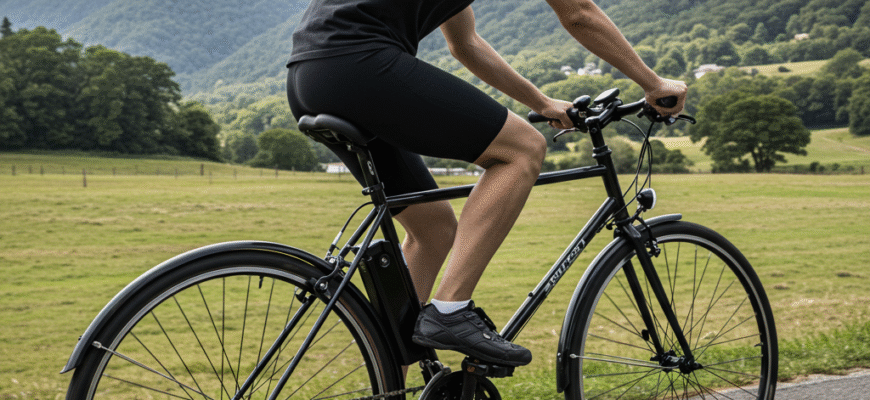Content
The Dawn of Two Wheels: Running Machines
Before pedals came into play, the earliest ancestor of the bicycle emerged. In 1817, the German Baron Karl von Drais invented the “Laufmaschine,” meaning “running machine.” Later known as the Draisienne or velocipede (though that term would also apply to later, different machines), this device was essentially two wheels held together by a wooden frame, with a steerable front wheel. Propulsion was achieved simply by the rider pushing off the ground with their feet, much like a modern balance bike for children. It was born partly out of necessity; a recent volcanic eruption had caused widespread crop failure and starvation of horses, prompting a search for alternative transport.Verified Fact: The Draisienne, invented by Karl von Drais in 1817, is widely considered the first practical two-wheeled vehicle. It featured steerable front wheel but crucially lacked any pedals or drive system. Riders propelled themselves by pushing their feet against the ground. This invention laid the fundamental groundwork for future bicycle development.While ingenious for its time, the Draisienne was heavy, cumbersome, and required relatively smooth surfaces, limiting its practicality. It enjoyed a brief period of popularity among adventurous members of the upper classes but soon faded as road conditions proved inadequate and pedestrian safety concerns arose.
Adding Power: The Boneshaker Era
The next significant leap came several decades later, around the 1860s in France. Various inventors experimented with adding pedals, but it’s often Pierre Michaux and his son Ernest who are credited with popularizing the first pedal-powered two-wheeler, often called the Michaux velocipede or, more descriptively, the “Boneshaker.” These machines featured pedals attached directly to the hub of the front wheel. The frame was typically made of stiff iron, and the wheels were often wooden with iron tires. As the nickname suggests, riding on the cobblestone streets of the era was an incredibly jarring experience. The direct drive system also meant speed was limited by the circumference of the front wheel and how fast one could crank the pedals. Despite the discomfort, it was a true bicycle – a human-powered vehicle with two wheels and pedals.Reaching New Heights: The Penny-Farthing
How do you go faster when your pedals are fixed to the front wheel? Simple: make the front wheel bigger! This logic led to the development of the iconic, if somewhat perilous, Ordinary bicycle, better known today as the Penny-Farthing (named after the large British penny and smaller farthing coins). Emerging in the 1870s, these bicycles featured a massive front wheel, sometimes exceeding five feet in diameter, and a much smaller rear wheel. The rider perched precariously atop the large wheel, directly powering it with pedals. Speed increased dramatically, as one revolution of the pedals now covered a much greater distance. These machines, primarily built in Great Britain, fostered the first cycling clubs and races. However, they were difficult to mount, unstable, and prone to accidents – particularly “headers,” where hitting an obstacle could send the rider flying over the handlebars. They were expensive and required considerable athleticism, making them largely the domain of daring young men.Safety, Comfort, and Mass Appeal: The Safety Bicycle Revolution
The inherent dangers and limitations of the Penny-Farthing spurred inventors to seek a better design. The breakthrough came in the mid-1880s with the development of the “Safety Bicycle.” While several designs emerged, John Kemp Starley’s “Rover” safety bicycle of 1885 is often considered the template for the modern bike. Key innovations included:- Two wheels of similar size: This dramatically lowered the rider’s center of gravity, making the bicycle much more stable and easier to mount and dismount.
- Rear-wheel drive via a chain: Pedals were now mounted on a crankset attached to the frame, connected to the rear wheel by a roller chain and sprockets. This allowed for gearing – the front chainring could be larger than the rear sprocket, enabling higher speeds without needing a giant front wheel.
- Direct steering: The front wheel was steered directly via handlebars connected by a fork.
The Impact of Air: Pneumatic Tires
Just as the safety bicycle design was taking hold, another invention transformed the riding experience: the pneumatic tire. Patented by John Boyd Dunlop in Belfast in 1888 (though Robert William Thomson had patented a similar idea decades earlier), air-filled rubber tires replaced solid rubber or metal bands. This cushioned the ride dramatically, absorbing shocks from uneven road surfaces, making cycling far more comfortable and significantly faster by reducing rolling resistance. The combination of the safety bicycle design and pneumatic tires proved irresistible, leading to a massive bicycle boom in the 1890s.Important Development: The invention of the pneumatic tire by John Boyd Dunlop fundamentally changed cycling. It drastically improved ride comfort compared to solid tires. Reduced rolling resistance allowed for greater speed and efficiency. This innovation, combined with the safety bicycle design, fueled the cycling craze of the late 19th century.
Refinement and Diversification: The 20th Century
The basic diamond frame safety bicycle design proved remarkably enduring. The 20th century saw continuous refinement rather than radical redesigns. Key developments included:- Materials Science: Frames evolved from heavy steel to lighter steel alloys (like Chromoly), then aluminum, titanium, and eventually carbon fiber composites, making bikes lighter, stiffer, and faster.
- Gearing Systems: Early hub gears gave way to sophisticated derailleur systems, offering riders a wide range of gears to tackle varied terrain, pioneered in racing events like the Tour de France. Index shifting later made changing gears simpler and more precise.
- Braking Systems: Early spoon brakes acting directly on the tire gave way to more effective caliper brakes, cantilever brakes, V-brakes, and eventually powerful disc brakes (hydraulic and mechanical).
- Specialization: Bicycles diversified to suit different purposes. Sleek, lightweight road bikes optimized for speed on pavement; robust mountain bikes (MTBs) with suspension and knobby tires for off-road trails (a major innovation starting in the 1970s); agile BMX bikes for tricks and racing; comfortable hybrid bikes blending road and mountain features for commuting; and many other niche designs emerged.









